
 ☰ Menu
☰ Menu

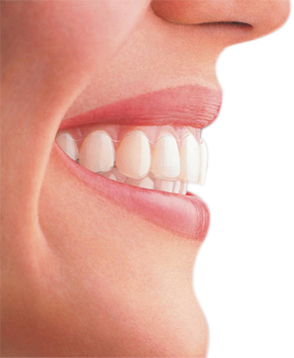
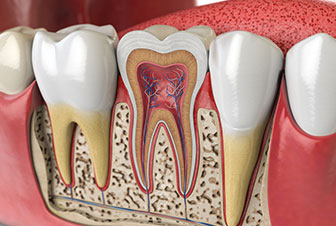
7 Interesting Facts About Root Canal Treatment
Hearing the words “root canal” often sends chills down people’s spines. For years, this treatment has been unfairly labeled as one of the scariest and most painful dental procedures. But here’s the truth: root canals are nothing like the horror stories you’ve heard. In fact, they are a common, safe, and pain-relieving treatment that can save your natural teeth. Let’s tackle the most common fears and myths about root canals to separate fact from fiction and put your mind at ease.
A root canal is a procedure that treats an infected or damaged tooth. Inside every tooth is a soft tissue called the pulp, which contains nerves and blood vessels. When this pulp gets infected due to deep decay, cracks, or injury, a root canal is needed to clean the infection and save the tooth.
The process involves:
1. Removing the infected pulp.
2. Cleaning and disinfecting the inside of the tooth.
3. Filling the space with a biocompatible material.
4. Sealing the tooth to protect it from further damage.
Root canals actually relieve pain, not cause it! The discomfort you feel is due to the infection or decay in the tooth, and the procedure removes the source of the problem. With modern techniques and anesthesia, most patients describe the experience as no more uncomfortable than getting a filling.
While tooth extraction may seem like the simpler option, it’s always better to save your natural tooth whenever possible. A root canal preserves the structure of your tooth, allowing you to chew, speak, and smile confidently.
1. Avoids the need for expensive replacements like dental implants or bridges.
2. Maintains the natural alignment of your teeth.
3. Prevents bone loss in the jaw caused by missing teeth.
In most cases, a root canal can be completed in just one or two visits, depending on the complexity of the infection. Your dentist will ensure the process is efficient and as convenient as possible for you.
After a root canal, your tooth will be restored with a crown or filling to strengthen and protect it. Once the restoration is complete, the tooth will function just like any other tooth, often lasting for years with proper care.
This myth comes from outdated theories that suggest root canals can spread harmful bacteria and cause other health issues. Modern dental research has thoroughly debunked this. Root canals are safe and performed under strict sterilization protocols.
Infections don’t always cause noticeable pain, especially in the early stages. A tooth may still need a root canal if:
1. There’s deep decay.
2. The tooth is discolored.
3. An X-ray shows infection in the surrounding bone.
Regular dental checkups help catch these issues before they become painful emergencies.
While root canals may seem costly upfront, they are more cost-effective in the long run compared to tooth extractions and replacements. Saving your natural tooth avoids the added expenses of dental implants or bridges.
Advancements in dental technology have made root canal treatments faster, more precise, and virtually pain-free. Here’s how modern root canals have improved:
1.Better Anesthesia: You’ll feel little to no pain during the procedure.
2.Advanced Tools: High-tech equipment ensures accuracy and comfort.
3.Quick Recovery: Most patients can return to normal activities the same day.
Not sure if you need a root canal? Here are some warning signs to look out for:
1. Persistent toothache, especially when chewing or biting.
2. Sensitivity to hot or cold that lingers.
3. Swollen or tender gums near the affected tooth.
4. A pimple-like bump on your gum (a sign of infection).
5. Darkening or discoloration of a tooth.
If you notice any of these symptoms, visit your dentist immediately to prevent the infection from spreading.
The best way to avoid root canals is to keep your teeth and gums healthy. Follow these tips:
1. Brush twice a day with fluoride toothpaste.
2. Floss daily to remove plaque between teeth.
3. Limit sugary snacks and drinks.
4. Visit your dentist regularly for checkups and cleanings.br>
5. Wear a mouthguard during sports to protect your teeth from injury.
Root canals don’t deserve their bad reputation. They are a safe, effective, and virtually pain-free way to save your natural tooth and restore your smile. If you’ve been told you need a root canal, don’t be afraid – modern dentistry has made this procedure as comfortable as possible. Have questions or concerns about root canals? Talk to your dentist to learn more and put your fears to rest.
Most root canals can be completed in 2-3 visits, some might even be done in a single visit within 60-90 minutes.
Some mild soreness is normal, but it’s temporary and can be managed with over-the-counter pain relievers.
An artificial tooth, called crown, is placed over a root canal treated tooth to provide strength and proper function. With due care, crowns can last a lifetime.
Yes, saving your natural tooth is always the best option to maintain oral health and function.
Yes, children may need root canals for baby teeth or permanent teeth, depending on the condition of the tooth.

Metal braces are the most common and recognizable type of braces. Made of stainless steel, they consist of metal brackets that are bonded to the teeth and connected by wires. Metal braces offer excellent durability and reliability in correcting a wide range of orthodontic issues. They allow for precise adjustments and are suitable for patients of all ages.
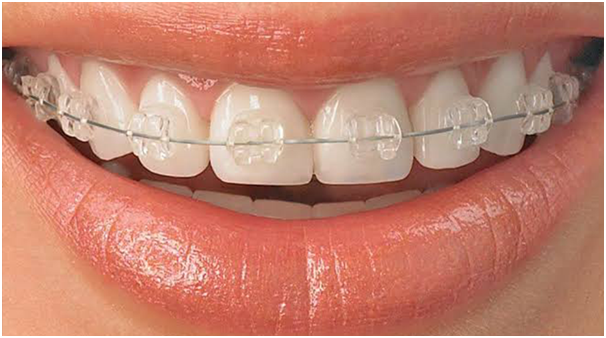
Ceramic braces are similar to metal braces but use tooth-colored or clear brackets, blending in with the natural color of the teeth. This makes them less noticeable and more aesthetically pleasing. Ceramic braces are a popular choice for individuals who desire a more discreet treatment option without compromising effectiveness. This type of braces are a popular choice for those seeking a more aesthetic option.
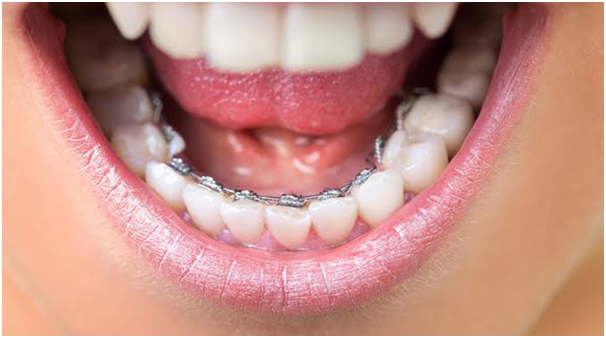
Lingual braces are braces that are placed on the inner surface of the teeth, making them virtually invisible from the front. They provide a highly discreet treatment option, as they are hidden behind the teeth. Lingual braces require specialized training and customization but offer effective teeth alignment and bite correction. They offer a discreet and aesthetic treatment option but can be more challenging to clean and adjust.
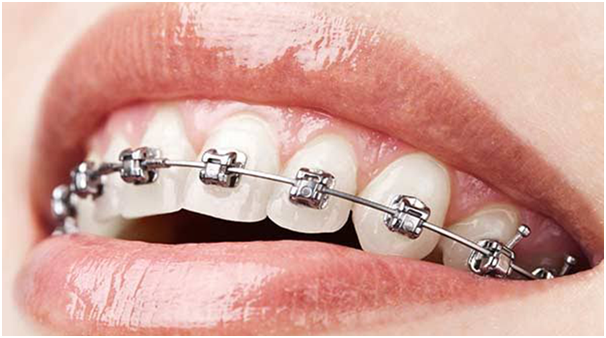
Self-ligating braces use brackets with built-in clips or doors that hold the archwire in place. They eliminate the need for elastic bands used in traditional braces, reducing friction and potentially shortening treatment time. Self-ligating braces are known for their ease of cleaning, efficient tooth movement, and improved patient comfort. As they do not require elastic bands, they are easier to clean and potentially reducing treatment time.
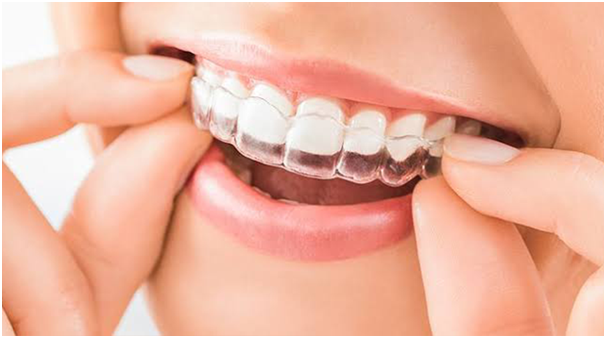
Clear aligners, such as Invisalign, are a popular alternative to traditional braces. They are removable, transparent trays made of medical-grade plastic that gradually shift the teeth into alignment. Clear aligners are virtually invisible, comfortable to wear, and allow for easy oral hygiene maintenance. They provide convenience and flexibility, as they can be removed for eating, drinking, and special occasions. They are custom-made and gradually shift the teeth into alignment. Clear aligners are popular for their convenience, comfort, and nearly invisible appearance.
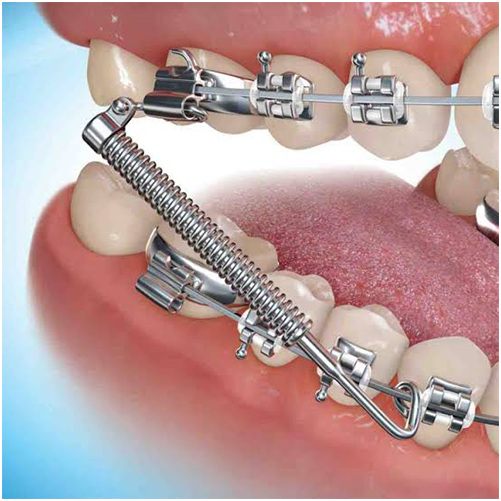
Forsus Appliances are orthodontic devices used to correct overbites or Class II malocclusions. They consist of springs and rods that apply gentle forces to move the upper and lower jaws into proper alignment. Forsus Appliances provide an effective, non-removable solution for bite correction, leading to improved facial harmony and function.
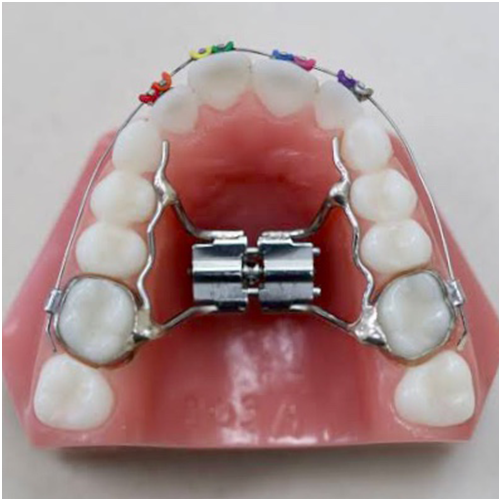
Palatal Expanders are orthodontic devices designed to widen the upper jaw. They work by gradually applying gentle pressure to the palate, expanding its width and creating more space for crowded teeth. Palatal Expanders are commonly used in children to correct crossbites and improve overall dental alignment, breathing, and facial development.

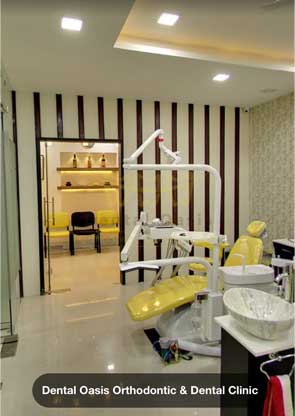



Testimonials
Dr. Virag Bhatia's Testimonials
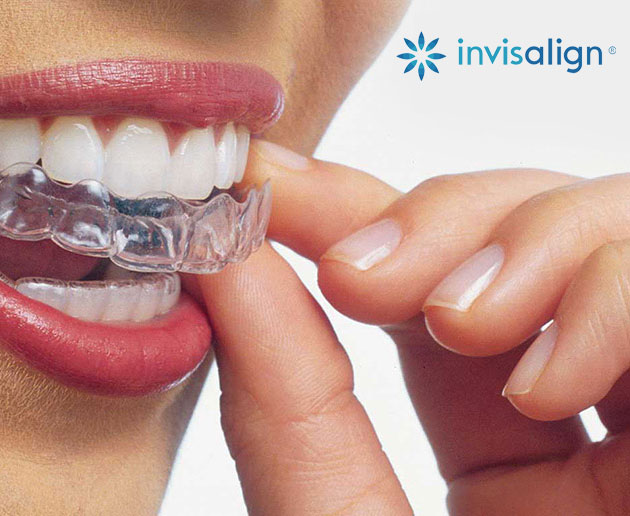
Uqba Javed
Today I can say I made the right choice! I walked into this clinic randomly based on reviews to search for a better (Less
painful!) solution to my dental crowding...l wanted to smile with no hesitation (The one you see in movies!).
Dr. Bhatia made all this so easy for me & took my smallest concerns into
consideration while carefully planning an overall effective treatment (Experience truly speaks for itself!) His team was also immensely courteous and supportive. All in all I couldn't be happier with the results....feels like I'm smiling a lil more each Day! Highly Recommended!

Mona Parthsarathi
I have never seen such a committed doctor in my life. Initially my mother was hesitant but after meeting Dr Virag Bhatia, she was very happy and comfortable...Very satisfied with the treatment.

Aishwarya
I got a 1 year treatment for misaligned teeth and Dr. Virag Bhatia provided me with the best options. The whole treatment was smooth and the results are amazing! He has been very humble and helpful all throughout the treatment and his expertise is clearly visible in my successful treatment. Thankyou Dr. Virag Bhatia for giving me a perfect smile.

Divya Chouhan
Excellent Doctor!!
I have undergone an Implant procedure for my front 10 upper teeth and eventually got a perfect smile.
My sincere recommendation and reference to all is to go visit Dr. Virag, my favorite dentist, if they have any dental problem.
I am glad to know Dr. Virag and would like to share my case. The reason for my visit was to take his opinion after being a victim of an improperly fitted bridge for my upper front 10 teeth.
I had no problem with my teeth until I met with an accident in 2011 where my chin bones are fractured. Also, I lost my upper 10 teeth and my gums got reduced due to a major surgery. My mandible was immobilized for 4 weeks (during which I survived on liquid diet) and the fracture was healed.
Later, my broken incisors were root canal treated and replaced with a new bridge(Due to gums reduction no one gave me an option of implants so it was being fixed with permanent cement) During all these years, I got a couple of replacement bridges in Mumbai, Pune, Bhopal bt couldn't get permanent solution & a perfect smile.
I am so fortunate that I could see Dr. Virag who identified and fixed the problem. He has given me a permanent solution of implants by adding artificial gums (looks exactly like real ones) with my teeth to make my smile perfect. I am very thankful to Dr. Virag and his skillful
approach to address my case.

Prabhat Kaushik
I am undergoing Invisalign treatment under Dr Virag's care and the experience has been nothing short of stellar. He always takes the time to listen to patients' issues and takes care to quench any apprehensions that we might have.
Timings are convenient and accommodating. Appointments are managed well and I never had to wait a lot at the office.
Dr. Virag even had my aligners delivered to my home when I had to move from Indore and the covid19 lockdown was just beginning, which greatly reduced the anxieties I had at the time. Strict cleanliness measures were taken upon visiting post lockdown this year which was excellent.
The treatment is going according to plan and I am fully satisfied. Hoping
the remaining 30% completes with zero issues like it has so far. Will post an update when done. Thanks a lot doc!

Richa Suchak
I had a very good experience with my orthodontic treatment done by Dr Virag Bhatia. He was very friendly, patient and explained the type of treatment he was doing in perfect detail. My teeth look really great now thanks to him. I would surely recommend getting orthodontic treatment done from him.

Satakshi Singh
Wonderful staff and doctor. The dentist takes time to answer questions and I never feel rushed. The staff is excellent. They are very pleasant and knowledgeable. You will be satisfied. The best dental care I have ever experienced! Professional, courteous, and friendly staff, would highly recommend it to anyone!!!

Harshita Bhadviya
I got my braces from Dr. Virag Bhatia. I was a bit apprehensive when Virag sir said that I'd have to get 3 teeth extracted but he definitely made me feel at ease and it didn't even hurt. The whole process went smoothly with any obstacle. It's 1st October now and I've got my braces removed and have retainers now. I couldn't express how satisfied I'm with my whole treatment :) The whole team was amazing and patient. I'll highly recommend to just go with it if you're thinking of getting braces from Virag sir!

Jalin Thampi
Dental Oasis gives the smile back on your face. A very professional yet versatile approach. A very friendly place where you are sure to get what you want to set your teeth right and bring that smile back. I had been to various dental surgeons many times to enquire if my teeth could be set right, but no one ever gave me a confident answer. But with Dr. Virag Bhatia, the very first day he assured me the outcome of what i always wanted. And today, when my treatment was over, it was all smiles. I am thankful and indebted to Dr. Virag and Dr. Tanya. Dental Oasis -A dental treatment centre, I can vouch for.

Anubha Pagare
Great experience. Right from appointment scheduling, reminders, treatment and follow ups. The doctor himself is a brilliant professional, so humble and kind. Explained the procedure in detail with all the pros and cons and suggested the best according to the situations. I am completely satisfied with the treatment I went through. Would highly recommend Dr Bhatia for the dental procedures :) Thank you Doc.!
Dr. Tanya Bhatia's Testimonials

Niharika Shrivastava
Visited for Veneers / LaminatesMy front teeth looked bad, wanted a smile makeover from long time. Mam suggested me veneers on front teeth, and after veneers, my smile has drastic improvement. Very happy with the results!

Saroj Singh
Visited for RCT - Single SittingHad severe pain in back tooth for which I underwent rct and immediately my pain was gone. Mam is very understanding and cooperative, she made me totally comfortable during injection. Thank you!

Rupanshi Gupta
Visited for Tooth Coloured FillingsI have cavities in my teeth...food gets lodged over there...very irritating...visited dental oasis.... madam suggested fillings in my teeth..she explained very well about the procedure...tooth coloured fillings were done with minimal pain..thank you..

Jagriti
Visited for Scaling / PolishingVery good behavior and very much supportive...! Love the way of treatment...!! Totally painless and satisfactory. The staff is very supportive and generous..! Pocket friendly and easy payment mode...!!!

Chinmay Garg
Visited for Aesthetic DentistryInsuring that the treatment will be painless and being straight forward with the answers while taking care that there is no distress to the patient.

Deepti Patil
Had a very good experience, mam is very gentle in work. She is very supportive and understands patients fear. Clinic is very hygienic.

Parth Choukse
Visited for Tooth Coloured FillingsHad decay in my back teeth for which I consulted mam. I was suggested tooth coloured fillings, which were done in single sitting and without pain. Thanks.

Manisha Sharma
Visited for Root Canal Treatment (RCT)I had severe toothache since a week...was not able to eat anything...root canal treatment was suggested...madam explained to me very well about it..in first sitting itself my pain was gone completely..amazing...am free from my pain and able to eat my food...thank you

Angad Singh
Visited for Aesthetic DentistryA wonderful experience of receiving treatment from Dr Tanya Bhatia. The personalised feel, comfortable clinic and professional hearing of the problem make it a 360° experience. Highly recommended!! I look forward to my next appointment.

Prathima
Visited for Scaling/PolishingI have a tendency of getting stains on my teeth...as they are my family dentist I got my cleaning as well as polishing done by madam...painless procedure and best part of clinic is the quality and hygiene maintenance.

206, WESTERN BUSINESS CENTRE, ABOVE UNION BANK OF INDIA, 1/6, NEW PALASIA, INDORE.
Book an Appointment